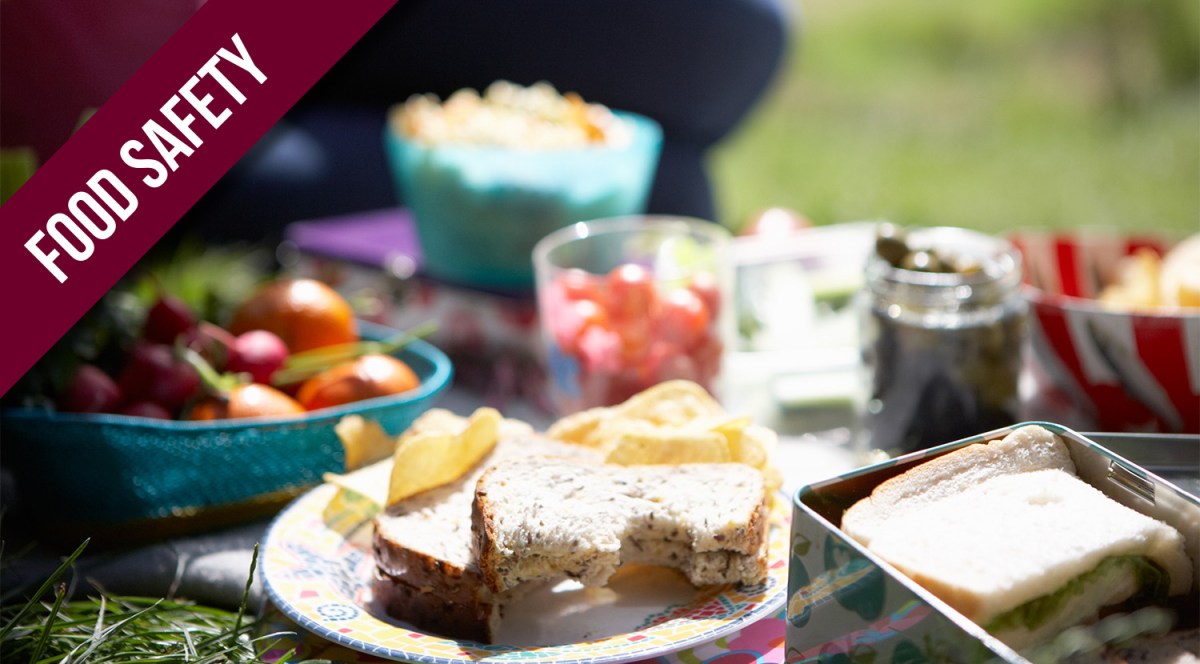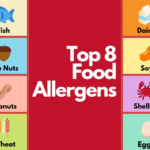Picture this: a sun-drenched park, laughter echoing, and a vibrant picnic spread bursting with delicious, allergy-safe treats. This isn’t a dream; it’s a reality you can create with the right knowledge and a little planning. This guide unveils the secrets to crafting delectable picnic menus that cater to everyone, regardless of dietary restrictions. Learn how to identify common allergens, find perfect substitutes, and adapt your favorite recipes for a truly inclusive and unforgettable outdoor feast.
We’ll journey through the essential steps of creating allergy-friendly masterpieces, from understanding common allergens and their substitutions to mastering safe food handling practices for picnics. Discover visually appealing presentation techniques that elevate your picnic game, transforming simple dishes into works of art. We’ll provide diverse, detailed recipes and menus designed to accommodate various allergies, ensuring that everyone can partake in the joy of a shared picnic.
Safe Food Handling & Preparation for Picnics
Planning an allergy-friendly picnic requires meticulous attention to detail, especially concerning food safety. Cross-contamination is a significant risk, and careful handling and preparation are crucial to ensure everyone enjoys a delicious and safe meal. This section Artikels best practices to minimize these risks and create a worry-free picnic experience for all.
Preventing cross-contamination is paramount when preparing food for individuals with allergies. Even trace amounts of allergens can trigger severe reactions. Maintaining separate preparation areas, utensils, and cooking surfaces for allergy-friendly foods is essential. Thorough cleaning and sanitizing of all surfaces and equipment between uses is also critical. Visualize a brightly lit kitchen, meticulously organized: one area dedicated solely to allergy-free items, another for potentially allergenic foods, each with its own set of clearly labeled utensils and cutting boards.
Preventing Cross-Contamination
To prevent cross-contamination, dedicate separate cutting boards, utensils, and serving dishes for allergy-friendly foods. Imagine vibrant, color-coded cutting boards: a bright green one for allergy-free ingredients, a deep red one for items containing potential allergens. After preparing each food group, thoroughly wash and sanitize all surfaces and equipment with hot, soapy water, followed by a sanitizing solution. This meticulous approach minimizes the risk of even microscopic allergen particles transferring to allergy-safe food.
Picnic Food Handling Checklist
Safe food handling extends beyond preparation. A comprehensive checklist ensures safe transport and consumption.
- Pre-Picnic Preparation: Thoroughly wash hands before and after handling food. Use separate cutting boards and utensils for allergy-free items. Pack allergy-friendly foods in clearly labeled containers to avoid confusion.
- Transportation: Transport perishable items in a well-insulated cooler with ice packs to maintain proper temperature. Keep allergy-free foods separate from potentially allergenic items, ideally in individual, sealed containers.
- On-Site Handling: Wash hands again before serving food. Use clean serving utensils. Keep food covered to prevent contamination from insects or other environmental factors. Dispose of waste properly in designated bins.
- Leftovers: Refrigerate leftovers promptly within two hours of serving. Discard any food left at room temperature for more than two hours.
Maintaining Proper Food Storage and Temperature
Maintaining proper food storage and temperature is critical to preventing bacterial growth and foodborne illnesses, particularly in warmer weather. Imagine a well-packed cooler, its interior a cool, protected environment, with ice packs strategically placed to maintain a consistent temperature below 40°F (4°C). Perishable foods, like salads and dairy products, are tightly sealed in separate containers, clearly labeled and separated to avoid cross-contamination. This precise control of temperature and storage prevents spoilage and protects against potential health hazards. This is particularly crucial for allergy-friendly foods, as spoilage can create unpredictable reactions.
Adapting Existing Recipes to Be Allergy-Friendly

Transforming beloved picnic recipes into allergy-friendly versions requires careful consideration and substitution. This process involves understanding the potential allergens in a recipe and replacing them with suitable alternatives that maintain the dish’s flavor and texture. This section provides a practical guide to adapting common picnic favorites, highlighting both the challenges and solutions involved.
Modifying a Potato Salad Recipe
Let’s take a classic potato salad as an example. A traditional recipe often includes mayonnaise, celery, and potentially dairy-based seasonings. To make this allergy-friendly, we need to address potential allergens like dairy, eggs (in mayonnaise), and gluten (in some seasonings).
- Identify Allergens: The primary allergens in a standard potato salad recipe are typically dairy (in mayonnaise or seasonings) and eggs (in mayonnaise). Celery is also a common allergen.
- Substitute Ingredients: Replace mayonnaise with a dairy-free and egg-free alternative, such as a vegan mayonnaise made from avocado or tofu. For celery, substitute with finely diced cucumber or bell peppers for a similar crunch and fresh flavor. If using herbs, ensure they are free of any potential cross-contamination from gluten-containing products.
- Adjust Seasoning: Use dairy-free alternatives for any creamy dressings or sauces. Experiment with different herbs and spices to maintain flavor. Consider using lemon juice or vinegar for acidity.
- Test and Adjust: Taste the potato salad throughout the preparation process. Adjust seasoning as needed to achieve the desired flavor profile. The absence of mayonnaise might require more lemon juice or vinegar for a similar tanginess.
The key to successful allergy-friendly adaptation is substituting ingredients without compromising taste or texture. Careful attention to detail and a willingness to experiment are essential.
Comparing Original and Modified Potato Salad Recipes
| Ingredient | Original Recipe | Allergy-Friendly Version |
|---|---|---|
| Mayonnaise | Traditional Mayonnaise (Dairy and Egg-based) | Vegan Mayonnaise (Avocado or Tofu-based) |
| Celery | Celery | Cucumber or Bell Pepper |
| Seasoning | Dairy-based Sour Cream or Cream Cheese | Dairy-free Cream Cheese alternative or Lemon Juice |
Adapting a Pasta Salad Recipe
Pasta salads present similar challenges. Many recipes use creamy dressings containing dairy or eggs, and some might include nuts or seeds. Adapting a pasta salad requires similar steps as the potato salad, focusing on ingredient substitutions.
- Identify Allergens: Common allergens in pasta salad include dairy (in dressings), eggs (in dressings), nuts, and seeds.
- Substitute Ingredients: Replace creamy dressings with dairy-free alternatives. Choose pasta shapes that hold their form well. Substitute nuts or seeds with sunflower seeds or pumpkin seeds if needed.
- Adjust Flavor: Use herbs, spices, and citrus to add flavor complexity. Consider adding a touch of sweetness with dried cranberries or raisins.
Remember to always check ingredient labels carefully to ensure all ingredients are free from the relevant allergens. Cross-contamination during preparation should also be avoided.
Challenges and Solutions in Recipe Adaptation
Adapting recipes can present challenges, particularly in replicating the original texture and flavor. For example, the creamy texture of a mayonnaise-based salad is difficult to fully replicate with vegan alternatives. However, experimenting with different ingredients and techniques can often lead to surprisingly delicious results. Careful planning and a willingness to experiment are key to overcoming these challenges.
Throwing an allergy-friendly picnic shouldn’t feel like navigating a minefield. With careful planning and the right recipes, you can create a memorable outdoor experience for everyone. By understanding common allergens, employing safe food handling techniques, and adapting existing recipes, you can confidently host a picnic where delicious food and joyful company take center stage. Embrace the challenge, unleash your creativity, and prepare for a picnic that’s both delicious and inclusive. The vibrant colors, enticing aromas, and happy faces around your picnic blanket will be the ultimate reward.
Common Queries
What are some common signs of an allergic reaction during a picnic?
Common signs include hives, swelling (especially of the face, lips, or tongue), difficulty breathing, vomiting, and dizziness. Seek immediate medical attention if these occur.
How long can allergy-friendly picnic food safely sit out at room temperature?
No more than two hours. In temperatures above 90°F (32°C), it’s only one hour. Keep perishable items in a cooler with ice packs.
Can I freeze allergy-friendly picnic recipes?
Many can be frozen successfully. Consult the specific recipe instructions for freezing guidelines. Allow adequate thawing time before serving.
Are there any specific labeling regulations I should be aware of when purchasing pre-made allergy-friendly ingredients?
Check labels carefully for allergen information. Look for certifications like “Gluten-Free” or statements explicitly stating the absence of common allergens. Always double-check ingredients lists.


